‘THIS IS NOT A DUMPSITE’
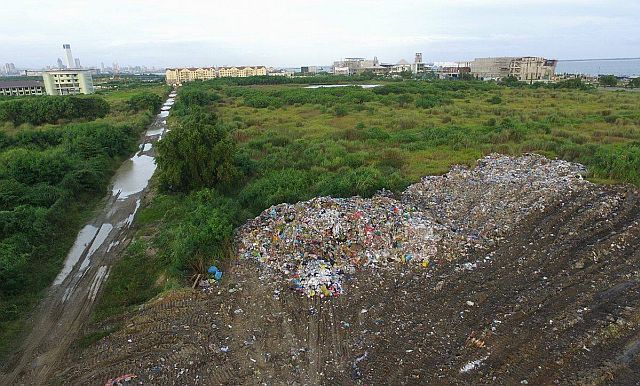
(CDN PHOTO/TONEE DESPOJO).
It will only be temporary. One month at most. By then, however, at least 5,000 tons of garbage will be sitting in open dumpsites, the size of a small subdivision, at the South Road Properties (SRP).
The garbage “transfer station” now being used by the Cebu City government to “store” the city’s trash at the SRP will not be a permanent dumpsite, according to Department of Public Services (DPS) head Roberto Cabarrubias.
It will only be there for around a month or so, he said, since by January, the city will already hire private haulers to take out the garbage from the SRP to another landfill.
“They say it is illegal. Actually, that is not dumping. That is only a transfer station. It was even used during the previous administration,” Cabarrubias said.
But former city mayor Michael Rama, in a press conference yesterday, clarified that when SRP was used as a “transfer station” during his administration, it was only used as a Materials Recovery Facility (MRF), or a trash-sorting area, and not as an open dumpsite.
Environmental lawyer Ben Cabrido also pointed that while laws on managing solid waste allow for a garbage transfer station, it also provided conditions that have to be followed.
“Waste that will be deposited (in a transfer station) should not exceed 24 hours. There should be a final destination. So it is not enough to establish a transfer station. You can’t have a sanitary landfill if there is no comprehensive plan,” he told Cebu Daily News by phone yesterday.
Any form of an open dumpsite violates the law since this has been prohibited since 2004, Cabrido said.
When Cebu Daily News visited the first of probably three “transfer stations” within the SRP, there was already a pile of garbage in the vacant area beside the DPS office and the General Services Office (GSO) warehouse.
A payloader was also busy compacting the soil and clearing the area which was damp and muddy from yesterday morning’s rain.
The city generates an average of 500 tons of garbage daily which, according to Cabarrubias, is expected to go higher to between 600 to 700 tons a day due to the Christmas season and the coming Sinulog festivities in January. This means that about 15,000 tons of garbage will be left in the area during the month-long period.
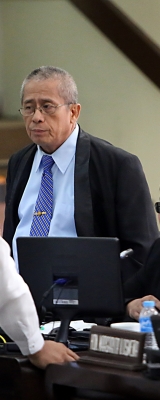
Cebu City councilor Roberto Cabarrubias
Cabarrubias said that one ten-wheeler dumptruck can contain between nine to ten tons of garbage, which means that 500 tons of daily garbage is equivalent to around 50 ten-wheeler trucks dumping at the transfer station, which is around one hectare in size and located within the vicinity of the still unoccupied new University of the Philippines Cebu (UP Cebu) campus, the SM Seaside Cebu mall complex and upscale mixed-use commercial and residential enclaves.
According to a realtor, who asked not to be named, the most that a developer can build in a one hectare lot are 180 to 200 low-cost houses. The lot can be divided into 40-square-meter cuts in the outer areas with around 70 houses within 80-150 square-meter cuts in the middle area, the realtor added.
Cabarrubias said that based on their inspection, the “area can accommodate the city’s garbage for the next five to ten days.”
He assured that City Hall’s heavy equipment will compact the garbage being dumped daily at the SRP so that after the ten-day period, the pile of garbage in the area will not be more than three or four meters high.
He added that while they cannot ensure that there will be no smell coming from the transfer station, the city will do its best to mitigate the smell including applying deodorizers and enzymes on the garbage there.
After ten days, Cabarrubias said they will have to move to another transfer station still within the SRP. Right now, they are eyeing two areas: the vacant space between SM Seaside City Cebu and Filinvest’s City di Mare; and the open space near the SRP Welcome Tower beside the old Pedro Calungsod templete.
Bidding for haulers
He, however, assured that by today, they will start working on their request to bid out the hiring of private haulers that will take the city’s garbage from the transfer stations to a final dumping site.
Cabarrubias said they hoped to do this by January when the payment can already be charged to the P120 million allotted to DPS for garbage collection and disposal under the 2017 annual budget.
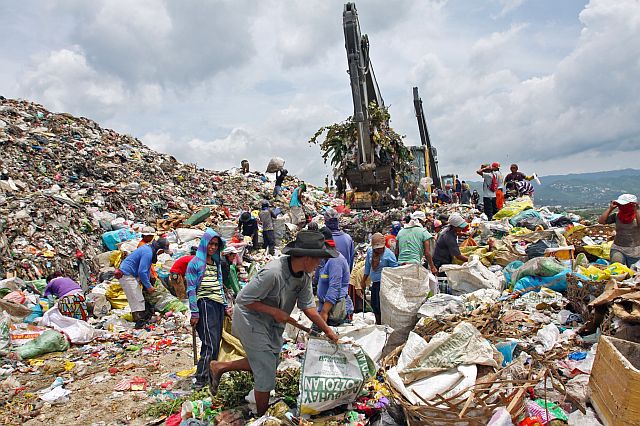
INAYAWAN LANDFILL (CDN FILE PHOTO)
In a decision dated Dec. 15 and received by City Hall on Dec. 16, the Court of Appeals ordered Cebu City Mayor Tomas Osmeña and the city to stop dumping at the Inayawan landfill while continuing its rehabilitation and closure plan.
The decision caught the city off guard, which scampered for ways to deal with the city’s garbage collection and disposal system.
Former Cebu City Councilor Nida Cabrera, environmental consultant of Cebu City Mayor Tomas Osmeña, likewise assured that she was helping in the rehabilitation and safe closure of the Inayawan landfill.
“Last Friday, I advised them to set up a temporary transfer station but it’s only for 24 hours. The city is now tapping the services of a service provider for hauling and disposing to other areas but they are still finalizing the contracts,” said Cabrera.
The mayor, she said, did not want to start without a contract.
Rama, meanwhile, said he hoped the city officials would make the right decision regarding the dumpsite, as he welcomed the CA’s decision to close the Inayawan landfill.
While saying that he did not want to comment more on the city’s decision to use the SRP as a transfer station, Rama said the matter will be best handled by the City Council and his allies there.
“The investors there, they were not buying that (so that) it will be a dumpsite. Now, it is also a challenge to the investors in that area. But I have always been ready to defend their side because we did not make SRP to become a (garbage) landfill,” he said.
No to Consolacion
According to Cabarrubias, they need to go through the entire bidding process in order to hire private haulers for the city’s garbage.
Right now, he said, they are also working on the terms of reference for the contract.
Among the terms for the private hauler is that they should have enough heavy equipment like payloader, bulldozer and backhoe as well as hauling trucks. They will be the one to bring the garbage from the transfer station all the way to a private landfill and will also be the one to pay for the tipping fee.
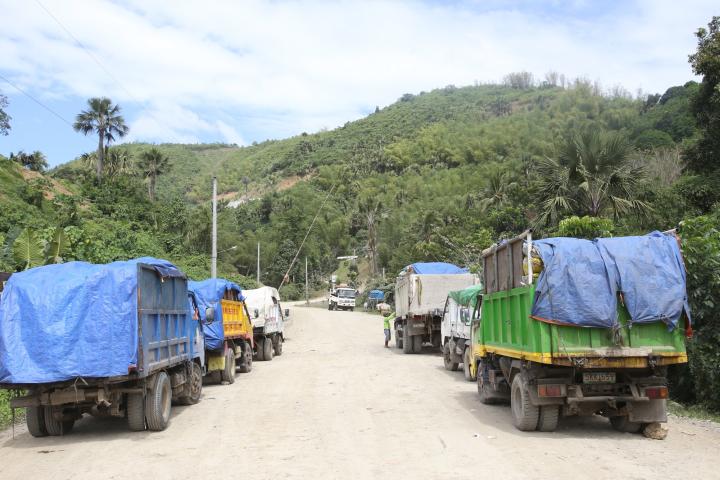
Garbague trucks from Cebu city’s barangays wait in line to dump their trash in the Consolacion landfill in this January 26, 2015 file photo. (CDN PHOTO/ JUNJIE MENDOZA)
There are also special conditions, according to Cabarrubias, including that the haulers should not dump the garbage at the private landfill in Consolacion town, which was where the city used to dump its garbage.
Mayor Osmeña has been firm in his decision that the city will not go back to the private landfill in Consolacion since the city has no contract with them when it was still dumping there.
Another condition is that the city will have to pay for all of these services at a rate not more than P1,500, which was the amount paid by the previous administration to private haulers which brought the city’s garbage to the Consolacion landfill.
Waste management road map
As this developed, environmentalists are encouraging the city government to begin the strict implementation of the law for solid waste management to reduce wastes.
“There should be compost facilities at barangay levels. Waste that will only be dumped at the sanitary landfill will be residual and recyclable waste while electronic and hazardous wastes should be separately stored,” Cabrido said.
Cabrido suggested that aside from fines and penalties for littering, there should be required hours of community service for violators in Cebu City.
Cabrido also encouraged the city officials to set aside politics.
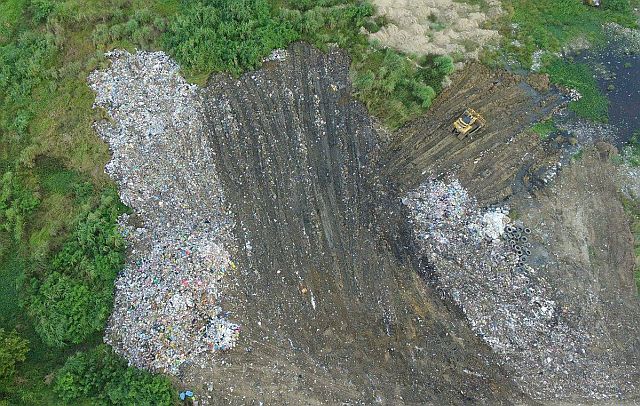
Heavy equipment clear the “temporary transfer station” for the city’s trash at the South Road Properties amid jitters from investors on just how long “temporary” will last. (CDN DRONE PHOTO/TONEE DESPOJO).
“That will be a challenge for the Cebu City government. There should be no in terms (when it comes to the garbage. There is no (Tomas) Osmeña and (Mike) Rama when we talk about garbage. Everybody suffers,” Cabrido added.
Lawyer Gloria Ramos, vice president of Oceana, said Osmeña should now take responsibility and move forward to address the problem.
“It is sad with what happened to Cebu City. There is a political will needed, a participatory and massive education for the public. We need discipline and cooperation from the public,” said Ramos.
Ramos also encouraged waste segregation and recycling.
“There should be a road map for solid waste management for Cebu City and other cities. What we have now is just a band aid solution. Why not go to the root problem?” Ramos added.
Disclaimer: The comments uploaded on this site do not necessarily represent or reflect the views of management and owner of Cebudailynews. We reserve the right to exclude comments that we deem to be inconsistent with our editorial standards.
